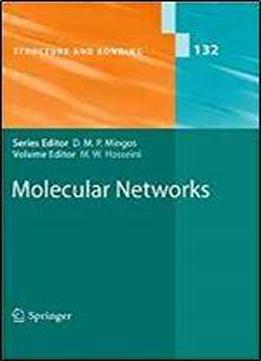
Molecular Networks (structure And Bonding)
by Mir Wais Hosseini /
2009 / English / PDF
4.6 MB Download
In the future, many modern materials will be increasingly based on the assembly of preformed molecular entities. Their structural characteristics and functional prop- ties will be programmed at the molecular level and their formation as a completed entity will be achieved by self-assembly processes. This in essence is a bottom-up approach and its success will require a deep understanding not only of the chemistry of intermolecular interactions and associations but also of self-assembly processes in the condensed phase. Among various interesting innovations brought about by the development of supramolecular chemistry, supramolecular synthesis is a part- ularly powerful approach for the design and generation of molecular architectures displaying both structural and functional complexity. The combination of mol- ular synthesis (which allows chemists to design and prepare extremely sophis- cated biotic and abiotic molecules through the interconnection of atoms or group of atoms by strong covalent bonds) and supramolecular synthesis (which orch- trates the association of molecules by recognition processes through the use of weak and reversible interactions) opens up endless structural and functional possibilities. Following the perceptive observation by Dunitz that ?A crystal is, in a sense, the supramolecule par excellence?, molecular crystals may be seen as in?nite periodic architectures resulting from the interconnection of building blocks or tectons ca- ble of self-assembling through speci?c recognising events.











